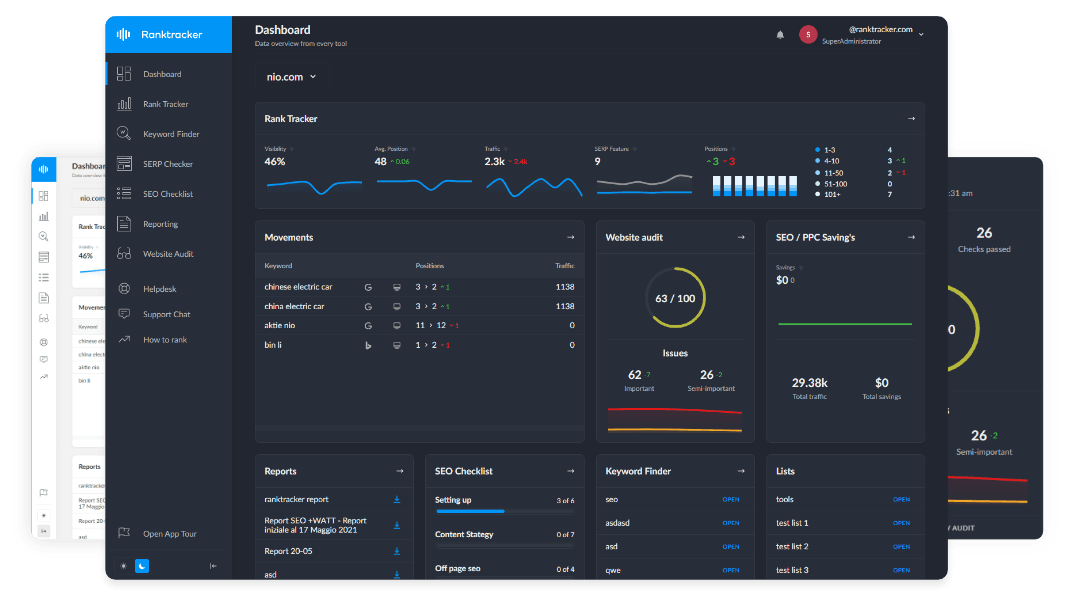Intro
For SEOs, historical web data isn’t just a curiosity—it’s a powerful asset. Whether you're recovering lost backlinks, researching competitor strategies, or documenting content for legal reasons, having access to older versions of web pages is essential.
The Wayback Machine by the Internet Archive is the most well-known tool for this purpose, offering billions of snapshots dating back to the 1990s. But like all tools, it has its limitations: inconsistent coverage, limited exportability, and no guarantees of uptime. That’s why seasoned SEO professionals maintain a toolkit of Wayback Machine alternatives—each offering unique advantages for digital marketers, link builders, and technical SEOs.
This article explores the best alternatives and how to integrate them into your SEO workflow to gain a true historical advantage.
Why SEOs Look for Wayback Machine Alternatives
While the Wayback Machine remains a valuable asset, there are several practical limitations:
1. Limited Indexing
Not every page gets captured—especially on newer or low-traffic domains.
2. Slow Load Times
Large, complex pages or popular requests can load very slowly—or not at all.
3. No Custom Archiving
You can't schedule future captures or force an immediate update.
4. No Screenshot Capture
The Wayback Machine captures page code, but if the design breaks (e.g., missing stylesheets), visual layouts can look distorted.
5. No Alerting or Monitoring
You don’t get notified if a competitor updates or deletes key content.
For SEO professionals, especially those handling technical audits, outreach, and enterprise-level monitoring, these drawbacks are significant.
Top Wayback Machine Alternatives for SEO Use in 2025
Below is a deeper dive into each tool with use-case examples and performance notes.
🔍 1. Archive.today (archive.ph, archive.is)
Key Features:
-
Instant manual snapshot capture.
-
Immutable and censorship-resistant storage.
-
Works even when websites block crawlers.
SEO Use Cases:
-
Perfect for archiving PBNs before they go offline.
-
Capture proof of live guest posts before clients delete them.
-
Use for content takedown disputes—archive the content as it was.
Real Example:
Before reaching out to a high-DR blog for a guest post, you can check archived versions of its old posts to ensure it hasn’t been deindexed, redesigned, or dropped in quality.
🔍 2. Perma.cc
Key Features:
-
Designed for academics and legal usage.
-
Provides custom short links with embedded timestamps.
-
Saves pages exactly as cited—no retroactive editing.
SEO Use Cases:
-
Archiving outreach links for compliance/reporting.
-
Recording citation links in agency reports.
-
Generating audit trails for link-buying disclosures.
Real Example:
When creating a backlink profile for a client, use Perma.cc to document exactly where each link was placed—even if it later gets nofollowed or removed.
🔍 3. Memento Time Travel
Key Features:
-
Aggregates archives from multiple sources: Wayback, Archive.today, national archives.
-
Browser extension and API support.
SEO Use Cases:
-
Ideal for finding rare or niche regional snapshots.
-
Use when Wayback returns no results, but other archives may have the content.
Real Example:
Trying to find a regional government press release that’s no longer online? Memento can pull from a European national archive, bypassing U.S.-based limitations.
🔍 4. PageFreezer
Key Features:
-
Compliance-grade archiving for enterprises.
-
Social media archiving + web page version control.
-
Timestamped, court-admissible snapshots.
SEO Use Cases:
-
Enterprise SEO teams managing brand reputation and litigation support.
-
Agency clients in regulated industries (finance, healthcare).
Real Example:
A fintech brand facing a regulatory inquiry can use PageFreezer to verify its compliance statements on landing pages over time.
🔍 5. Stillio
Key Features:
-
Scheduled screenshot capture (hourly to monthly).
-
Tracks changes visually across time.
-
Export to Dropbox, Drive, or Slack.
SEO Use Cases:
-
Monitor competitor site changes visually.
-
Track SERP features or Google Ads placements.
-
Track homepage CTA variations.
Real Example:
A/B testing landing pages? Use Stillio to compare how a competitor’s CTA evolved across time during a campaign window.
🔍 6. Google Cache & Bing Cache
Key Features:
-
Free, instant, and often up-to-date.
-
Shows the most recent crawl by each search engine.
SEO Use Cases:
-
Recover recently deleted or broken content.
-
Check if Google is indexing a new page.
-
Validate technical SEO issues like meta tag misplacement.
Real Example:
After updating metadata, use Google Cache to ensure Googlebot is seeing the correct title and description before SERPs refresh.
SEO Comparison Table
| Tool | Archive Format | Auto Snapshots | Manual Snapshots | Visual Screenshots | Legal Use | SEO Relevance |
| Wayback Machine | HTML | ✅ | ❌ | ❌ | ❌ | Historical audits, general research |
| Archive.today | HTML | ❌ | ✅ | Partial | ❌ | PBNs, deleted pages, unarchived content |
| Perma.cc | HTML | ❌ | ✅ | ❌ | ✅ | Link building, compliance archiving |
| Memento | HTML (varied) | ✅ | ✅ | ❌ | ❌ | Rare sources, global content tracking |
| PageFreezer | HTML + Screenshot | ✅ | ✅ | ✅ | ✅ | Enterprise clients, legal disputes |
| Stillio | Screenshot | ✅ | ✅ | ✅ | ❌ | Visual CTA + landing page monitoring |
| Google Cache | HTML (recent only) | ✅ | ❌ | ❌ | ❌ | Indexing checks, short-term recovery |
Advanced SEO Use Cases
🔗 Link Reclamation
Use archived pages to prove that a link was live before it was removed or the page was deleted. This helps in outreach campaigns or disavow audits.
🕵️ Competitor Research
Want to reverse-engineer a successful launch? Look back at old blog posts, landing page funnels, and content architecture.
💡 Content Ideation
Use historical snapshots to find content that once ranked well but has since been removed—then recreate or outperform it.
📉 Deindexing and Penalty Analysis
If a competitor drops out of the SERPs, use archival tools to detect when and how their site changed—e.g., aggressive redesign, loss of backlinks, or thin content.
Pro Tips for SEOs
-
Pair archive tools with Ranktracker’s SERP Checker and Keyword Finder to build full-funnel SEO strategies that consider content age, volatility, and freshness.
-
Always manually archive your own important pages, especially before major site changes.
-
For client work, use timestamped archives to document deliverables and protect against disputes.
-
Use archives to track parasite SEO content on news domains—see how long they last, and when they drop off.
Conclusion
The web is fleeting. Whether you’re building links, defending rankings, or analyzing competitors, having reliable historical access to web content is non-negotiable. The Wayback Machine is a great start, but it's no longer enough for modern SEOs.
With tools like Archive.today, Memento, Stillio, and PageFreezer, you can go deeper, faster, and with more confidence. Build a diversified web archive strategy—because in SEO, what was online yesterday might be gone today.

